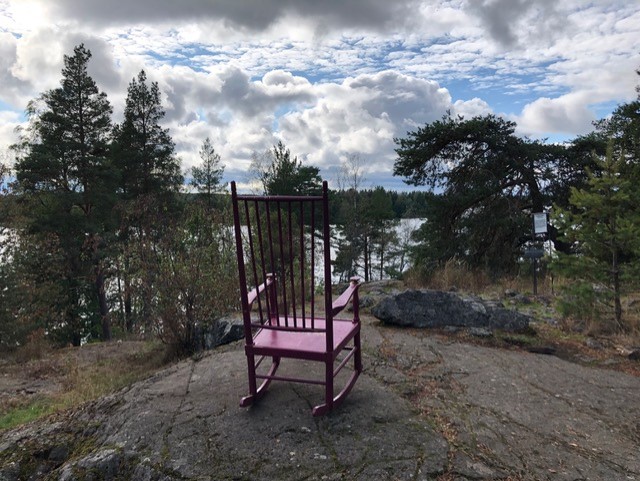The Time Machines and Utopias - artist house museum project 2018–2022
In 2017 I worked in an artist house museum in Finland – The Gallen-Kallela Museum Tarvaspää – and the question of what museums could do about the ongoing climate crisis troubled me. I discussed my concerns with the museum director Tuija Wahlroos, who got inspired and soon gathered three artist house museums together for a collaborative project. Our goal was to find out what opportunities or boundaries we have as artist house museums when approaching ecological issues?
The museums involved
The project took place in three museums located in different parts of Finland: The Home of Aino and Jean Sibelius Ainola, The Gallen-Kallela Museum Tarvaspää and The House and Studio of Emil Wikström Visavuori. These former homes of prominent Finnish artists – composer Jean Sibelius (1865-1957), artist and art professor Akseli Gallen-Kallela (1865-1931), and sculptor Emil Wikström (1864-1942) – were opened in 1974, 1961 and 1967. The organisations are small, hosting only from two to six personnel. The Finnish Heritage Agency FHA defines Ainola, Tarvaspää and Visavuori as "built cultural heritage sites of national interest".[1] The list of these significant sites presents the versatility of the Finnish built environment and reflects on the nation's history and development.[2]
.jpg)
Gallen-Kallela is often referred to as the Finnish national artist, Sibelius as the national composer and Wikström's statues are well-known from locations of national significance. These artists' essential role in creating Finland's national imagery is still present: in the museums' biographical narratives and visitors' expectations before the visit. Besides culture, nature also has an essential role in the Finnish identity and people. In the project, we intended to combine the national history and respect of nature with the ongoing climate crisis to induce conversations about the possible futures of the planet amongst our usual visitors.
The project in practice
The museums hosted a tripartite exhibition with contemporary art and sound installations: Time Machines and Utopias: Livelihoods, Wanderlust & Homecoming in 8.5.2021–30.1.2022. Every museum had its specific sub-theme: Ainola's theme was food (Livelihoods), Tarvaspää's travelling (Wanderlust), and Visavuori's housing (Homecoming). The sub-themes were explored through past, present and future. The historical section presented the collections in each exhibition, the contemporary art section concentrated on the utopias, and the public engagement section explored current living facilities. With temporal perspectives, we investigated how everyday living has changed and how will it change further with the climate crisis.
.jpg)
The outcomes
Artist house museums are facing many negotiations. They are targeted with expectations of remaining unchangeable, presenting the home of the former resident, but, at the same time, expected to develop their practices to be timely. Furthermore, the knowledge these museums are sharing with the public is under reconstruction: in the 1900s, the historical artists were often presented with distance and respect, when during the 2000s, their weaknesses, personal life, and political convictions have become more to the focus. In addition, being both international and national is descriptive of the museums' character. It relates to the critical question of what kind of national imagery gets unintentionally or intentionally transmitted. These negotiations became articulated during our collaboration, and they also seem to form a basis for future work.

The opportunities for artist house museums standing for climate
The concept of ecological reconstruction[3] - by a research group BIOS - has been interesting for this project. It refers to the change people need to make in everyday practices to enable future after fossil fuel. BIOS compares the current situation with the one after WW2: "the material structures and social practices of production, transport and housing must be reconstructed".[4] Based on The Time Machines and Utopias -project, artist house museums have a potential impact on ecological reconstruction by (1) providing a historical perspective to prevailing social values and changes in them, (2) widening the imagination towards possible futures, and (3) being within reach for many kinds of visitors interested in arts, history and nature. In the future, our work will continue with strengthening the network with a broader cultural route, including more artist house museums in Finland.
[1] The FHA (http://www.rky.fi/read/asp/r_default.aspx)
[2] The FHA 2010, Mitä ovat valtakunnallisesti merkittävät rakennetut kulttuuriympäristöt. (https://web.archive.org/web/20100114083210/http://www.nba.fi/fi/kohteita)
[3] BIOS 8.11.2019, Ecological Reconstruction in Finland. (eco.bios.fi)
[4] BIOS 8.11.2019, Ecological Reconstruction in Finland. (eco.bios.fi)